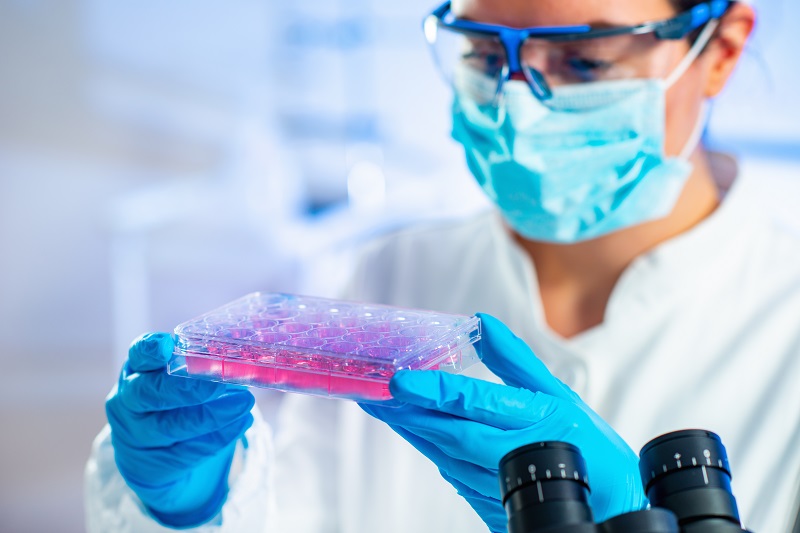
Finally some good news. New research is now using an innovative technique to turn stem cells into insulin-producing beta cells in a more effective manner. The insulin-producing cells were proven to cure type 1 diabetes in mice, their benefits lasting for 9 months.
In 2018, the statistics showed that 187,000 children and teenagers in the United States were living with type 1 diabetes. Plus, 1.4 million people aged over 20 years suffer from the exact same condition and manage it with insulin, according to the same statistics from the Centers for Disease Control and Prevention (CDC).
In type 1 diabetes, the immune system attacks and destroys the insulin-producing beta cells with the pancreas, because of a faulty autoimmune response.
There was some previous research that has pointed to human pluripotent stem cells (hPSCs) as a probable therapeutic avenue for type 1 diabetes. Pluripotent stem cells are an interesting option for researchers from a therapeutic standpoint due to the fact that they can self-renew and can split them int a variety of cell types. Also, researchers have already worked with hPSCs previously, to create insulin-producing beta cells. However, they didn’t succeed in curing type 1 diabetes.
Jeffrey R. Millman, Ph.D., an assistant professor of medicine and biomedical engineering at Washington University School of Medicine in St. Louis, is the main researcher of the new study, which finally managed to solve these previous “problems”.
He explains that the challenges that had stopped the scientist’s progress until this day. He says, “A common problem when you’re trying to transform a human stem cell into an insulin-producing beta cell — or a neuron or a heart cell — is that you also produce other cells that you don’t want.”
“In the case of beta cells, we might get other types of pancreas cells or liver cells.” While implanting these unnecessary — or “off-target” — cells do not cause any harm, Millman further explains that creating more of them offsets the number of therapeutically useful cells.
“The more off-target cells you get, the less therapeutically relevant cells you have,” he says.
“You need about a billion beta cells to cure a person of diabetes. But if a quarter of the cells you make are actually liver cells or other pancreas cells, instead of needing a billion cells, you’ll need 1.25 billion cells. It makes curing the disease 25% more difficult.”
Additionally, this new research was based on an innovative technique that bypassed the previous problems. The findings appear in the journal Nature Biotechnology.
A cutting-edge stem cell technique
This new and innovative technique targets the cytoskeleton — or inner “scaffolding” — of the hPSC to guide their differentiation into pancreatic cells.
The cytoskeleton is a structure that offers cells the mechanical support that allows them to move, multiply and divide, while also helping cells to keep their shape.
By targeting this structure, it allows the researchers to create some irrelevant cells some better functioning beta cells that help in controlling the blood sugar.
Millman explains the innovation of the approach, saying, “It’s a completely different approach, fundamentally different in the way we go about it.”
“Previously, we would identify various proteins and factors and sprinkle them on the cells to see what would happen. As we have better understood the signals, we’ve been able to make that process less random.”
Stem cells ‘rapidly cured’ severe diabetes
Millman and his team transplanted “islet-sized aggregates” of beta cells separated from hPSC into mice which suffered from type 1 diabetes. A group of cells located in the pancreas is called pancreatic islet, and some of these cells are insulin-producing beta cells.
This transplantation method “rapidly reversed severe preexisting diabetes in mice,” writes the author in their paper. The new stem cell convention “can rapidly cure preexisting diabetes in mice,” they emphasize later on.
The switch occurred at a rate similar to that of human islets. The normal blood sugar control lasted at least 9 months.
“We were able to make more beta cells, and those cells functioned better in the mice, some of which remained cured for more than a year.” – Jeffrey Millman
The main researcher continues to report on the highly significant findings.
“These mice had very severe diabetes with blood sugar readings of more than 500 milligrams per deciliter of blood (mg/dL)— levels that could be fatal for a person — and when we gave the mice the insulin-secreting cells, within 2 weeks their blood glucose levels had returned to normal and stayed that way for many months.”
Additionally, the researchers also explain that there are still some steps that need to be researched before this study cand help humans.
The first step that needs to be researched is testing cells in larger animals and then they must discover a way to automate the new technique in order to produce billions of cells required for the millions of people that suffer from type 1 diabetes.











































